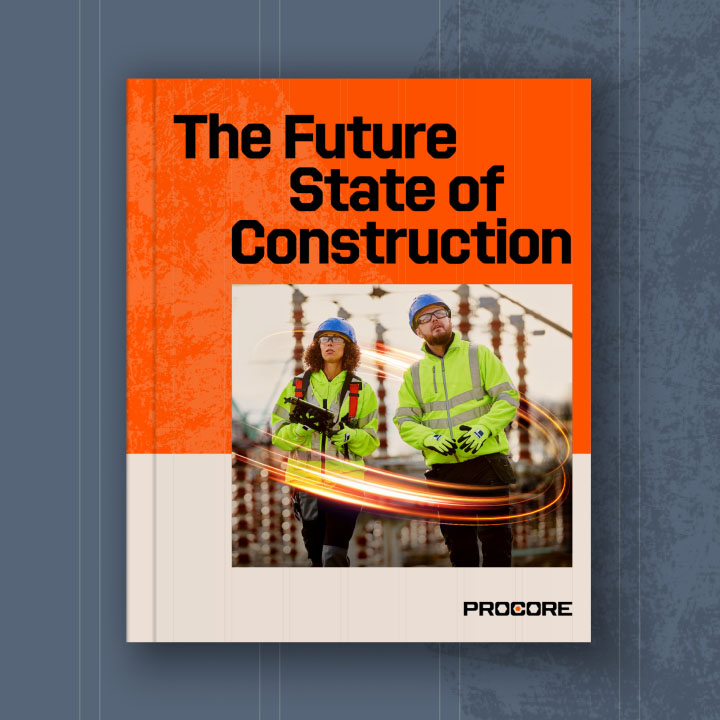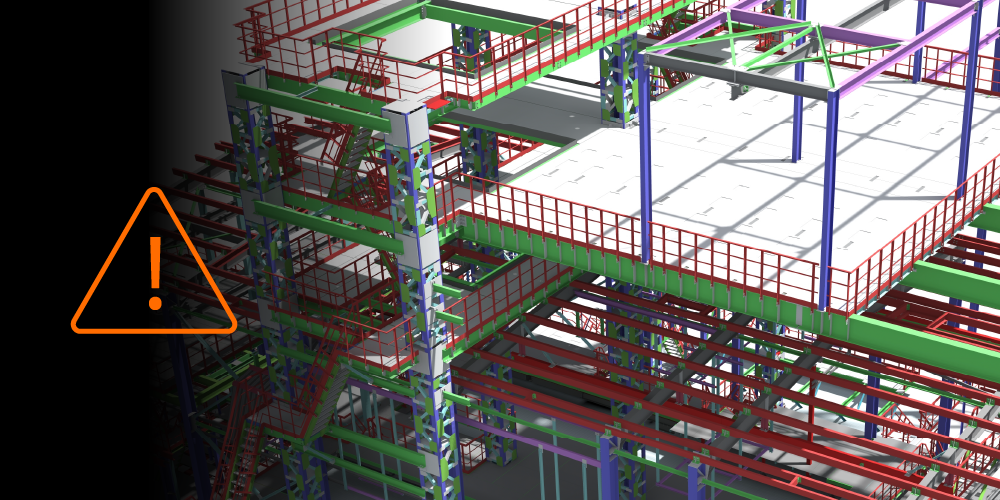Related Articles
— 19 min read
Construction Estimating: The Building Blocks to Success

Last Updated Sep 10, 2025

Brendan McGurk
Strategic Product Consultant - Construction Financials
21 articles
"Brendan is a Strategic Product Consultant for Procore Financials, where he enjoys leading and innovating internal company processes to deliver on both public and private projects. He brings 12 years of experience working in various construction roles ranging from builder's hand to quantity surveyor and project manager on both the owner and main contractor side.
Originally studying Accounting, he changed direction to quantity surveying after the Christchurch Earthquake in 2011. He is now qualified and an NZIQS-recognised Quantity Surveyor. He’s since worked on projects from feasibility, concept design, and value engineering right through to construction and post-construction support.
Last Updated Sep 10, 2025

Construction estimating is a crucial process in the construction industry, as it involves accurately predicting the cost of a project before work begins. Within Australia and New Zealand, construction estimating is typically carried out by trained estimators or Quantity Surveyors who specialise in estimating and managing construction costs.
Construction estimating is the process of evaluating all costs associated with a specific construction project. The costs generally include direct and indirect expenses, overhead, and markups.
- Direct costs: Funds allocated toward aspects or items of the construction process such as materials, labour, and equipment.
- Indirect costs: Any costs that are not directly associated with construction activities. That may include things such as utilities, quality control, administration, permits, security, legal fees, etc. This can also be known as Preliminary and General.
- Labour hours: All costs associated with the actual construction of the project. The wages or rate paid to the team estimated cost for each task and potential overtime.
- Subcontractor expenses: Estimated expenses for duties that go out to subcontractors. That includes labour, materials, and equipment.
It is vital that the construction estimate (made during the preconstruction phase) is conducted properly. Ideally, cost estimates are produced by a professional construction estimator who can provide accurate and valid reasons as to how much the job will cost, along with identifying any risk, based on skill and past experience and the process can be complex.
Learn more: The 6 phases of construction project management
Table of contents
The Importance of Estimating in Construction
Construction estimating is important because it helps both the owner-developer (and/or client) plus the contractors determine if a project is feasible within the allotted budget. It also helps stakeholders determine if value engineering – the process of improving the value of a product or service while reducing costs – needs to be carried out, as doing so can reveal if additional funding is required. These steps can be done prior to tendering or during the early contractor engagement phase.
If the client is satisfied with the indicative price, they can either:
- Provide the quantities, plans, and supporting documentation (specifications) to head contractors, to price the required scope
- Allow the potential main contractors to do their own takeoff and estimates, as part of the tender stage.
Preparing an accurate estimate helps leading contractors understand the true bottom line of completing a project. But it also comes with the caveat that contractors, eager to secure new business for their company, will be aggressive about their approach.
Additionally, contractors rely on accurate estimates to submit competitive, profitable tenders, and that if they win a project, only to discover that they underestimated the budget, or did not consider the full scope of works (or potential risks), then profitability suffers. Likewise, overestimating the budget may result in the tender being rejected, due to being higher than everyone else’s.
Lastly, when negotiating during tendering, an accurate estimate will ensure that the owner-developer and contractor profit equally from the outcome.
8 Steps to Successful Estimating
Whether a construction estimator works for a head contractor, a subcontractor or an owner-developer, they typically follow the same process.
1. Review the tender package.
The tender package contains all of the documents necessary for submitting a tender: owner-contractor agreements, bond forms, general conditions, supplementary general conditions and construction specifications. Contractors who tender on a project are bound to complete the work set in the tender package. Therefore, the construction estimator must be familiar with every aspect of the project – if they are to submit an accurate estimate.
The tender package contains drawings, i.e., technical illustrations that visually represent the specifications of a construction project. Construction estimators often subdivide drawings into categories based on their purpose: architectural, structural, mechanical, electrical and plumbing. These can also split up into packages depending on the tender engagements.
Although head contractors and subcontractors will review the same documents, subcontractors often refer only to the documents that are relevant to the work they perform for the project.
Below are the steps that construction estimators follow when reviewing a tender package:
- Ensure all drawings and specifications are present and current.
A design firm may have their own approach to (sequentially) numbering and subdividing documents. Construction estimators should take the time to confirm they have everything they need to submit an accurate estimate, and dates of documents as aligned with each other. - Get an overview of the project.
By reviewing the documents, construction estimators get an idea of the project scope, including the material needs and quality of finishes and will separate out the tasks and elements of the tender to better understand the individual scopes of works. - Evaluate Package requirements.
This involves reviewing the engineering and specific drawings to understand the material and equipment needs of the building.
Construction estimators consider the MEP needs of a building, and how those needs may influence the construction process.
Identifying that certain works require underground work can increase the cost of a project and might be noted on certain packages and not others.
- Identify any non-standard items.
Subcontractors specialise in certain types of work. So, construction estimators should pay special attention to unusual floor plans, features or finishes that may influence the cost of a project.
During the estimating process, the construction estimator will continually refer back to the tender documents. This is to ensure that their estimate covers every aspect of the project’s specifications and requirements.
By reviewing the tender documents, the construction estimator can then use their understanding of (each phase of) the construction process to prepare an accurate, comprehensive estimate.
After reviewing the documents, a construction estimator for a head contractor will also subdivide the project into work packages for subcontractors or for themselves, if they use their own labour.
By reviewing the technical specifications (also called construction specifications or specs), the construction estimator can clearly see the scope of work according to various divisions of the NATSPEC Construction Format: concrete masonry, metals, finishes, plumbing, etc.
For example, a construction estimator may create a work package that includes the materials and labour for a rough-in plumbing task, and another that covers the requirements for a windows and installation task. A single construction project may contain multiple work packages.
Dividing a project into work packages requires extreme diligence. Therefore, a construction estimator must ensure that they:
- Include every aspect of the project in a work package. If the construction estimator fails to assign all work to a contractor, the contractor will be on the hook for unaccounted project costs.
- Avoid assigning the same work twice to multiple work packages. Otherwise, the tender may be too high to be competitive, as it will contain unnecessarily multiplied work.
- Clearly define the scope of each work package. This is vital when dividing a project into multiple work packages. A clear scope will ensure that the parties complete their portion of the work properly.
Once a construction estimator divides all the work into packages, the head contractor can request tenders from subcontractors, for either a portion of or all the required construction work.
2. Visit the construction site.
Depending on the tender requirements, site visits may be mandatory or voluntary. However, good construction estimators should always choose the former. It gives them a better understanding of the site conditions – better than what elevation drawings and photographs can offer. The exception to this rule is subcontractors, who may need to review only the documentation (provided by the owner-developer or head contractor) to understand their role in the project.
The main purpose of a site visit is to help the construction estimator better understand the conditions of the site, and how those conditions may influence the cost of the project. The cost and complexity of a project may increase if the site has:
- Poor drainage, difficult subsurface soil conditions and adjacent buildings.
- Access difficulties, which make it harder to manoeuvre equipment and deliver materials.
- Poorly located utilities (water, electricity), which may necessitate underground works.
- Surrounding properties, ability to do work outside normal times, or restrictions on what can be kept on site.
- Factors that influence labour constants. Are quantities excessively large or small? What is the standard of finish required?
During a site visit, the estimator will take notes and photographs. They will also discuss with contractors the potential influence the site may have on delivering the project successfully.
It's always a good idea to come to the site with a list of questions or items that you need to check to help inform your estimate, or to clarify. Never assume, always ask.
On top of reviewing the site, the estimator should be familiar with the surrounding area, including the:
- Local requirements (Council Codes, permits) and regulations (parking, noise, working hours, materials)
- Availability of subcontractors and construction equipment rental companies
- Availability of materials within the region
- Road access and suitability for heavy equipment and delivery vehicles.
For construction estimators, a site visit is an invaluable way to assess the cost and feasibility of a construction project. In turn, the result is a more accurate construction estimate.
3. Perform a material takeoff.
Also known as a quantity takeoff, a material takeoff is a measurement of the materials and labour required to complete a construction project. To do this, construction estimators review the construction documents and count every item required for the project.
Material needs are listed based on the way they are measured. Australia and New Zealand have requirements for how to measure materials and quantities. For more information about this please get in touch with either AIQS or NZIQS:
- Quantity or count (Doors or Hardware)
- Area (e.g. internal wall linings or flooring)
- Volume (e.g. Bulk Excavation)
- Length (e.g. Handrails)
- Sum (Permits)
On large construction projects, the owner-developer or engineer may create a Bill of Quantities (BOQ) to simplify the tender levelling process.
This document breaks down the scope of work into an itemised list of activities and materials. Even when contractors receive a BOQ, they still perform a material takeoff to verify the quantities and identify discrepancies and inform the owner of these for clarification through a tender clarification or RFI.
After completing a material takeoff, construction estimators have a comprehensive list of every material that the construction team will need to complete the project. Construction estimators also use this information to determine what equipment to include in each work package and assign it as such.
With this information, contractors can gather pricing information from material and equipment suppliers as well as subcontractors.
4. Solicit pricing from suppliers and vendors.
Once subcontractors have a definitive list of materials and equipment, they can gather pricing information from suppliers and vendors.
When pricing materials, subcontractors should note that:
- Material waste requires ordering extra materials. Waste can be built in. Although contractors should strive to eliminate unnecessary material waste, certain material sizing can produce waste, i.e., internal lining being sold in sheets 2.4 high, but used in a 2.8 m high wall meaning additional sheets and waste being used.
- Bulk pricing may dictate order sizes. Let’s say a contractor needs 20,000 m3 for a project. But it is more cost effective to purchase 25,000 m3 due to supplier pricing structures.
- Quotes have limited lifespans. If a subcontractor receives a quote for materials, they must ensure the quote is valid for long enough. To be specific, long enough for the owner to accept their tender, or the quote is high enough to cover the risk of escalation.
For equipment they do not already own, contractors need to contact equipment vendors.
They can then determine the price of leasing or renting equipment for the duration of the project. Contractors also need to consider the associated costs (depreciation, maintenance, etc.) of equipment they already own or plan to buy upfront or rent. Depending on the tender and local requirements this information may have to be provided in their estimate.
By now, contractors should have definitive numbers, which they can include in their project costs. From there, construction estimators can add direct, indirect and overhead costs to these numbers – giving contractors an idea of the true financial cost of a project.
5. Evaluate labour requirements.
Using information from the material takeoff, construction estimators can determine the necessary labour for a project, specifying:
- Which roles the project requires.
- The amount of labour hours to complete the project.
- Field productivity based on data from similar past projects and from the current project.
With the site visit and tender clarifications from the previous steps, you would have a better idea of issues that might arise on site, and the uniqueness of every site.
When it comes to estimating construction work, no two projects are identical and the estimator must be altered to the circumstances outside normal conditions that may influence the labour constants of each trade. Such as:
- What is the season of the year?
- Is the project big or small?
- Is the construction methodology required unorthodox?
- Does the work require alteration or repair? And do you know the latent conditions?
- How skilled or efficient is the labour force?
- Is the work location high off the ground, unusually confined?
Be aware of the scope of each labour constant in relation to the project. For example, is your labour for concrete mixed on site or off site? Is it positioned by crane, hoist or pump?
What is the height of the building, is your building multi story? This will have implications for the cost associated with the positioning of material and working at various heights. And as a result need to make provisions for extra staff management.
For subcontractors, the team may consist of tradespeople, labourers and assistants. For head contractors, project-specific managers (and other professional roles) may be a direct cost as they are tied to one specific project.
Regardless, construction estimators should be careful to calculate the loaded rate of pay (which covers employee benefits) and not just multiply the total hours by hourly wage. The loaded rate of pay includes:
- Wages
- Insurance (health, dental, optical, as well as life, unemployment and workers’ compensation insurance)
- Superannuation/Kiwisaver
- Sick, holiday, annual and parental leave
- Penalty rates
Construction estimators must include all the associated costs of hiring someone for the duration of the construction project. Otherwise, the estimate will not reflect the true cost of labour.
6. Determine insurance and bonding costs.
Insurance and bonding help mitigate risk for owner-developers and contractors alike. But these benefits do come with a cost, and those costs should be part of the project estimates. All construction companies require Public and Products Liability (which covers third-party injury and property damage) and Material Damage cover (which covers for the physical loss or damage to buildings and materials), and this will form part of your tender to the client/main contractor.
Depending on the size, scope and nature of the construction project, construction companies may also need:
- General property and tools of trade insurance
- Commercial motor vehicle insurance
- Management liability insurance
Along with insurance, contractors working on public (and some commercial) project tenders may also evidence of require construction bonds, such as:
- Performance bonds
- Payment bonds
- Maintenance bonds
- Tender bonds
- Retention bonds
- Supply bonds
Construction estimators must include both insurance and bonds in their construction estimates. Contractors may be able to spread their bond and insurance costs across multiple projects, but some projects may call for specific bonds and insurance coverage.
7. Calculate overhead and indirect field costs.
Along with direct project costs, construction estimators should consider the overhead costs and indirect field costs associated with a construction project.
Preliminary and General (P&G) is an allowance for the main contractor or subcontractor to provide site set up, security, health and safety and management for the project as required by the relevant statutory requirements.
The main contractor is responsible for
- Management and supervision for all staff for the duration of the project
- Coordination of all subcontractors and specialist trades
- Quality assurance
- Establishing temporary facilities and welfare
- Establishing temporary site infrastructure (power, water, sewer, comms, etc.)
- Security of the site
- Health and Safety of the site
- Environmental protection, compliance
- Temp works, traffic management etc
- Insurances/bonds/guarantees
- Access, scaffolding and general cranage requirements
Even if a tender package does not specify these costs, they are still vital to the completion of a construction project. Therefore, construction estimators should consider the individual rate of these items and the duration for which the contractors will need these items (temporary site office etc.)
Calculation of the above P&G is typically based upon a resource and duration method when tendering, taking the required resources and multiplying by the anticipated duration of the works on site. However at the concept/preliminary design stages this is usually applied as a percentage. And this is based on the current market, comparable historic data, complexity of the project and anything else identified during the site visit and tender process
Along with indirect costs, there are also general overhead costs, also called General and Administrative (G&A) expenses. These expenses cover the cost of doing business – whether or not the contractor has any projects going on, they need to pay these expenses anyway.
To ensure the business can keep operating, contractors should add overhead costs to their estimates, spreading them out over all of their projects annually.
Examples of common overhead expenses include:
- Administrative salaries
- Rent for office space
- Software subscriptions
- Taxes
- Utilities
- Insurance
- Depreciation
Typically, construction estimators should consider the total expected annual revenue of the company, including the total expected annual overhead cost. Together, the construction estimator can use these two figures to allocate – with reasonable accuracy – a specific percentage of the overhead costs for each project.
8. Consider profit and contingency.
After calculating all the costs for a construction project, the construction estimator should then consider the profit margin and contingency. The profit is the fee that the contractor earns for completing the contract – which they can invest into the business to grow.
Contractor margin is a charge for off site overheads and profit. This being based upon the contractor's business overheads, plus an allowance for profit.
The calculator of the percentage is based on an assessment of the main contractors’ overheads and profit they have used on previous construction projects.
Margins are applied to the P&G and the individual sub trades that for the scope of work, but can also be kept separate from the project to see the value of it.
The margin is applied as a percentage or amount to the construction value after P&G has been added.
Allowances for margin vary but are often higher amounts for more complex projects.
Meanwhile, a contingency is a small amount of money set aside for unforeseen costs, challenges and events. Risks are present in all projects and can occur at any stage of a project. Risk can affect quality, scope, quality and programme.
At the outset of a project, the risks are at their highest elements such as
- Scope
- Quality
- Undefined damage
- Unknown ground conditions
- Untried technology
- Temporary works
By now, the construction estimator has calculated all project costs – materials, labour, equipment, overhead and indirect field costs and contingency – and determined that the project will return a healthy profit. From here, contractors can submit competitive tenders or negotiate with the owner-developer or head contractor.
From Estimate To Tender Proposal
Once the construction estimator determines the sales price, a tender manager will create a construction proposal, detailing everything to include in the tender price in clear, concise terms. They will also outline the conditions of the tender, also known as tags.
Assembling the tender submission should be an ordered process, taking advantage of the earlier planning. If the process is too hasty, it is more likely to include pressure-induced mistakes.
A competent tenderer will have a library of previous submissions to draw on. Non-price attributes will probably include items covering track record, resources, methodology, plant and so on.
This padding-out of the submission should be weighted in accordance with the tender documents.
If there are no ‘points’ given to anything other than the price, then focus on price.
For some clients, price is only a part of the assessment – they want the best contractor for the project. Your tender conditions (tags) may cover items that reflect your company culture, resources and particular skills as well as covering concerns you have with the project or documentation.
Tags may also be included to cover a lack of detail to allow you to price accurately, access to the designer during construction or insufficient time allowed for you to do the project given your current situation (you may offer alternative start/finish dates and the effect they would have on your price).
Tender documents are only the start.
The tender documents are only the base for the contract documents; the process of putting together a contract has just begun. A contract must have an offer, acceptance and consideration.
Your tender submission is an offer and, as such, should include everything that you want to have added to the contract documents. You may wish to influence the process subtly by offering a discount for using different procedures or alternative materials that are cheaper for you to source.
Learn more: 8 common types of contracts in construction
The client will assess your submission. If your tender conditions are not acceptable and are amended, you will receive a counter offer. There may be some face-to-face negotiations before a satisfactory position is reached. The process can go to and fro until both parties are willing to sign a contract.
A contract must be legal and between willing parties, and the consideration is the payment for the work. Since tender reviewers will try to ensure that everything in the scope of work is in the tender price, be sure to use the same language shared in the construction specifications and drawings.
Following the guidelines in the estimating process makes it easy to compare each section of the tender price to a section of the specifications.
Even when the tender is for a lump sum contract, using a standard format makes it easier to create a schedule of values as well as improve the integration between estimating software and accounting systems.
See what’s coming in construction over the next decade.
Download the Future State of Construction Report for insights, trends, and innovations shaping the industry over the next 8–10 years.

Categories:
Written by

Brendan McGurk
Strategic Product Consultant - Construction Financials | Procore
21 articles
"Brendan is a Strategic Product Consultant for Procore Financials, where he enjoys leading and innovating internal company processes to deliver on both public and private projects. He brings 12 years of experience working in various construction roles ranging from builder's hand to quantity surveyor and project manager on both the owner and main contractor side.
Originally studying Accounting, he changed direction to quantity surveying after the Christchurch Earthquake in 2011. He is now qualified and an NZIQS-recognised Quantity Surveyor. He’s since worked on projects from feasibility, concept design, and value engineering right through to construction and post-construction support.
Explore more helpful resources

Managing Direct Costs in Construction: How Visibility Drives Profitability
Direct costs define the financial reality of every construction project. They cover the labour, materials, and equipment that drive delivery and determine profitability. But even the best-planned budgets can shift...

BIM Clash Detection: Reducing Rework, Delays, and Risk in Construction
Design clashes can be a significant hidden cost in construction, as each conflict between systems risks expensive rework, project delays, and reduced margins. BIM clash detection empowers teams to identify...

Next-Gen Job-Costing: Ready to Move? 5 Things to Consider Before You Get Started
In this three-part series, Quantity Surveyor turned Financial Solutions Specialist Clint Burgess uncovers the real-world gains for people, processes, and profits when businesses move from legacy to next-generation Enterprise Resource...

From Workarounds to Workflow: Solving Construction’s Legacy Job-Costing System Challenges with Next-Gen Tools
In this three-part series, Quantity Surveyor turned Financial Solutions Specialist Clint Burgess uncovers the real-world gains for people, processes, and profits when businesses move from legacy to next-generation Enterprise Resource...
